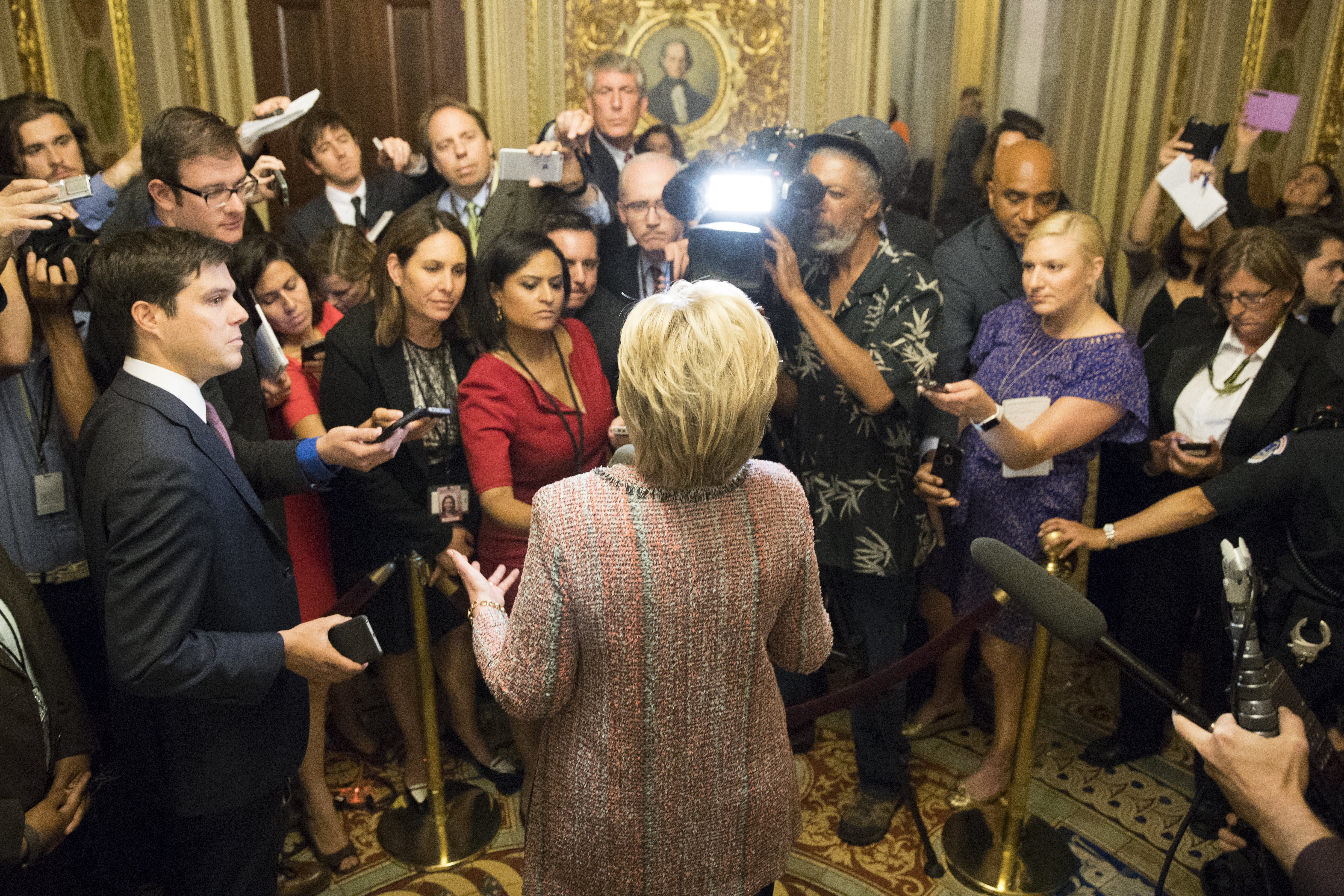
What’s wrong with the news media’s coverage of the campaign of 2016?
“Why?”
A study from Harvard’s Kennedy School says the inclusion decades ago of “why” to the traditional list of questions every news story should answer — who, what, why, when, where, how — has shifted the focus of news coverage from the newsmaker to the reporter.
The assertion comes in the third of Shorenstein Center’s papers on the current campaign, which reports that the voice of the candidates if the least-often-heard — 7 percent of the time for Donald Trump and 4 percent for Hillary Clinton.
Journalists do most of the talking.
In the 1960s, journalists began shifting from their traditional descriptive style of reporting— “who, what, when, and where”—to a more interpretive style that included the “why.”[1] It served to shift control of the news to reporters. Newsmakers had the upper hand with the older form.
The journalist’s task was to describe events, which typically meant telling the audience what newsmakers had said and done. The newer interpretive form altered that formula. Newsmakers’ actions would still make the news and even provide many of the headlines and story leads, but the message would be shaped by the interpretation the journalist imposed on events. Instead of simply reporting events, the raw material would be repackaged with the journalist, not the newsmaker, at the center.
The change did not take place all at once. Vestiges of the older form remained but the shift was unmistakable. In the 1960s, when the older descriptive style prevailed, the average candidate sound bite on the evening news exceeded 40 seconds and the average continuous quote or paraphrase of a candidate’s words in the newspaper was roughly 20 lines. By the late 1980s, the average sound bite had shrunk to 10 seconds—only long enough for a sentence or two—and the average newspaper quote or paraphrase had been cut by two-thirds.
As the candidates’ voices became quieter and journalists’ voices became louder, the content of election news shifted. Presidential candidates spend their time talking about their issues and qualifications, hoping that voters will find the pitch appealing enough to carry them to victory. Reporters see the campaign differently. They are on the lookout for compelling stories. That perspective leads them to favor what’s timely over what’s old, what’s novel over what’s predictable, what’s sensational over what’s drab, what’s negative over what’s positive.
Coincidentally, the assertion in the study comes as criticism of mainstream journalists mounts for not using their voice even more, specifically to call Donald Trump a “liar.”
A week after NPR defended its decision not to do so, the public editor (ombudsman) of the New York Times defended the paper’s portrayal of Donald Trump’s — umm — lie about Barack Obama’s birth as a lie.
Language of any sort is among the most powerful tools in politics. Consultants are specialists in what words to use — it’s called messaging — and it’s with careful consideration that news organizations make decisions about how and when they allow reporters and editors to use particular terms. The Associated Press, in one example, continues to cause a stir after it banned the phrases “climate deniers” and “climate skeptics” from its articles last year.
“Lie” falls into this general category, especially with Trump on the scene. It’s a loaded word, but in the case of Trump and birthers it passes my smell test. The Republican nominee has propagated a bogus claim about Obama’s nationality that is meant to undermine the nation’s first black president and ignite a strange political movement. Yet it is unequivocally false and Trump knows that.
That said, I think The Times should use this term rarely. Its power in political warfare has so freighted the word that its mere appearance on news pages, however factually accurate, feels partisan. It feels, as Ryan said, as if you’re playing the referee in frivolous political disputes.
Whether the choice offends the Harvard researchers is unclear and probably a bit complex since its study would seem to question whether the media should have found itself suckered into attending Trump’s “he was born here” news conference because it had long ago given up interest in policy questions. That’s a fallout, the study suggests, of journalists falling in love with the sound of their own voice.
The shift to journalist-centered news has been consequential. One effect has been to elevate the horse race at the expense of the election’s substance. No aspect of the campaign meets journalists’ need for novelty more predictably than does the horse race.
Each new poll or disruption gives journalists the opportunity to reassess the candidates’ tactics and positions in the race. Policy issues, on the other hand, lack novelty. A new development may thrust a new issue into the campaign, but policy problems are typically longstanding. If they came and went overnight, they would not be problems. Thus it is that when a candidate first announces a policy stand, it makes news. Later on, it normally doesn’t.
A second consequence of the shift to journalist-centered news has been to elevate the negative at the expense of the positive. Although Donald Trump might well be an exception, candidates spend most of their time talking up their issues and why they are qualified to be president. They also attack their opponents’ positions and fitness for office, but it’s the secondary thrust of most of their speeches. Journalists, on the other hand, have a preference for the attack. Conflict makes for better stories than does cooperation or agreement.
